For millennia, the Great Plains thundered with the hooves of an estimated 30-60 million Buffalo.
They formed the backbone of Indigenous life across the continent, with their vast herds stretching from modern-day Alaska to Mexico. Buffalo Nations understood their relationship with Buffalo as sacred reciprocity—the animals provided food, shelter, clothing, tools, and guidance, while Indigenous Peoples cultivated their environments to create abundance for all living things.
Buffalo now exist on remnants of their formerly vast territories. Yellowstone is the only place in the lower 48 states to have a continuously wild Buffalo population since time immemorial — elsewhere, they were either eliminated entirely or hybridized with cattle.
Understanding the full scope of Buffalo history—from balance to near-extinction to restoration—is essential as we continue expanding conservation efforts on Wind River and elsewhere. This history reminds us not only of what was taken, but of the resilience required to bring Buffalo home and the responsibility that comes with their return.
Buffalo History in North America
Pre-colonial times – 1800: It’s conservatively estimated that 60 million Buffalo once grazed across North America. Many Native Tribes relied heavily on the Buffalo for food, shelter, clothing, and the animal was foundational to spirituality and cultural belief systems.
1800: Mass hunting by settlers and the U.S. army began, and Buffalo were killed off with guns by the millions — for both sport and as a strategy of genocide against Native American communities — nearly causing their extinction.
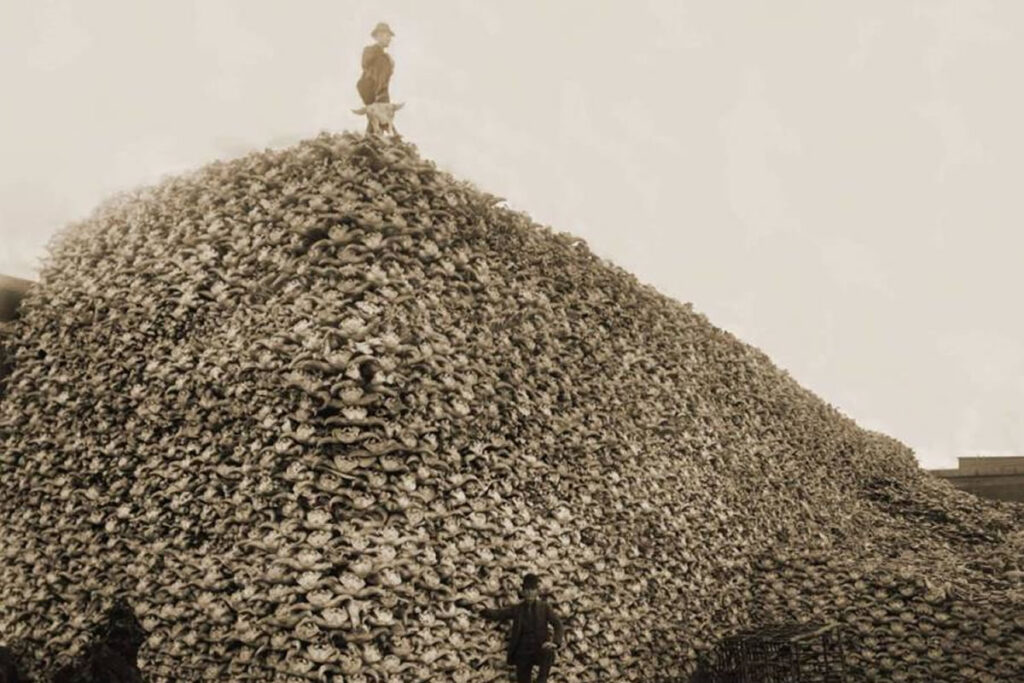
Men standing with pile of buffalo skulls, Michigan Carbon Works, Rougeville MI, 1892. (Burton Historical Collection, Detroit Public Library)
1869: The completion of the Transcontinental Railroad gave hunters even easier access to the Great Plains to hunt Buffalo.

1889: Buffalo range decreased rapidly to only a few dots on the map.
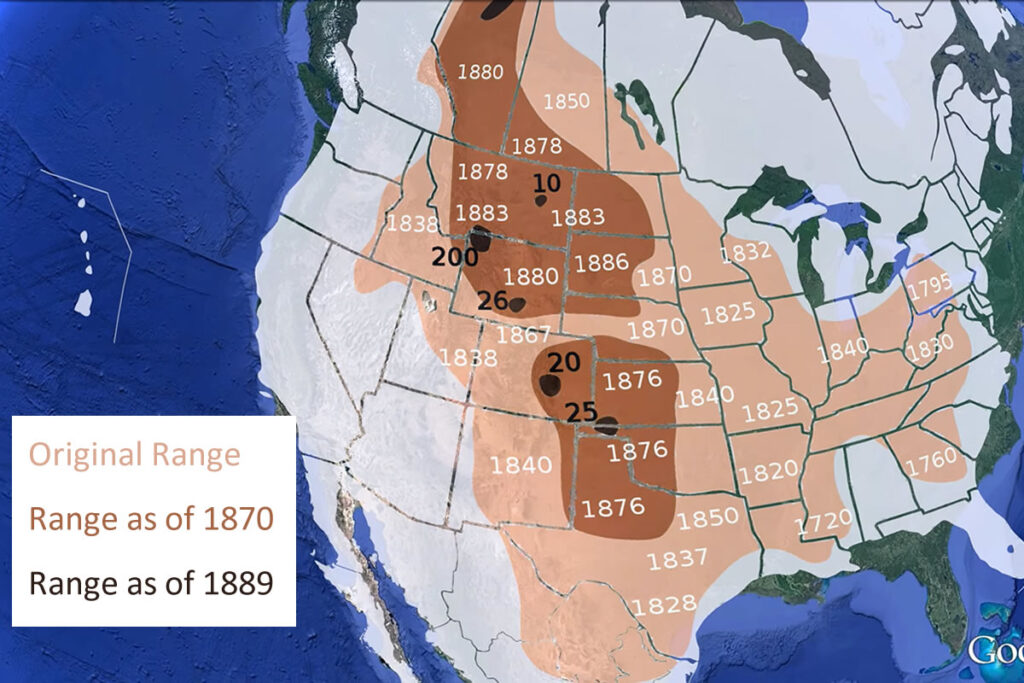
1905: Yellowstone’s herd was reduced to only 20. Only a few hundred Buffalo remained at the turn of the century. William Hornaday formed the American Bison Society in hopes of bringing back wild herds.
1906-67: For 60 years, their numbers were further reduced. This was due to belief that they, along with elk and pronghorn, would over-graze private land belonging to settlers. This continued to diminish what was once a prime food source for many Tribes.
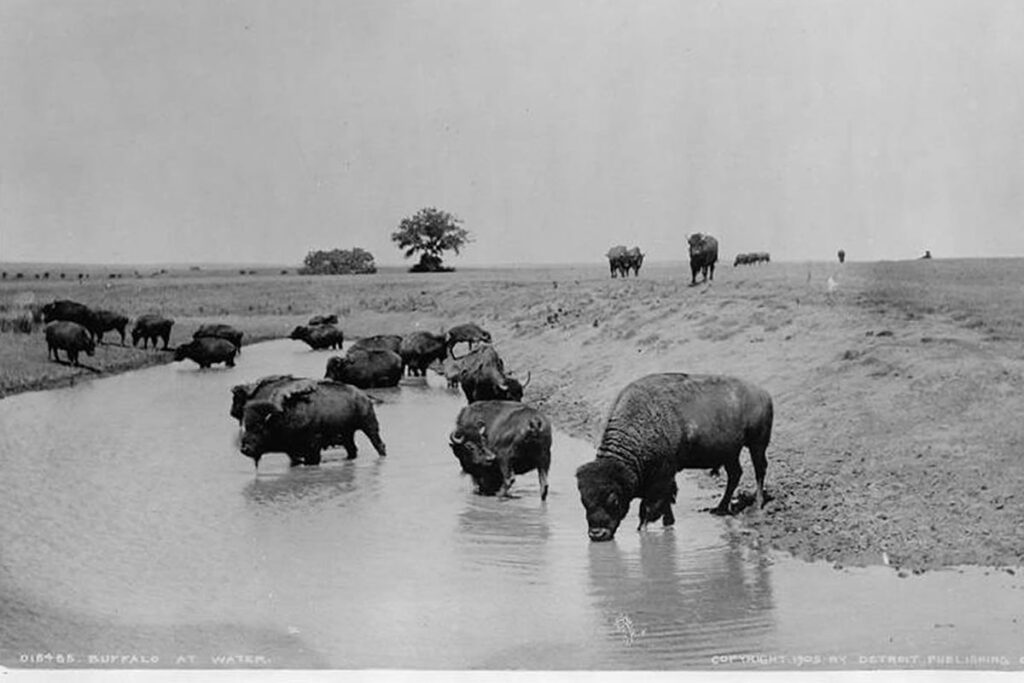
Buffalo at Water. Copyright 1905 by Detroit Publishing.
1992: The InterTribal Buffalo Council (ITBC) was formed. Presently, the ITBC includes 80+ Tribes from twenty states and has restored over 20,000 Buffalo to Tribal lands.
1997: A first-ever memorandum between a national conservation organization (National Wildlife Federation) and a Tribal organization (ITBC) was created to protect Yellowstone Bison and announce a management solution to address brucellosis in the Greater Yellowstone Area (an approach endorsed by the National Academy of Science).
1998-2005: The National Wildlife Federation (NWF) and ITBC advocated for the development of a quarantine facility for Yellowstone bison, with relocation of bison to Native Tribes. As a result, that facility was instituted in 2005 and a 5-year disease protocol was carried out.
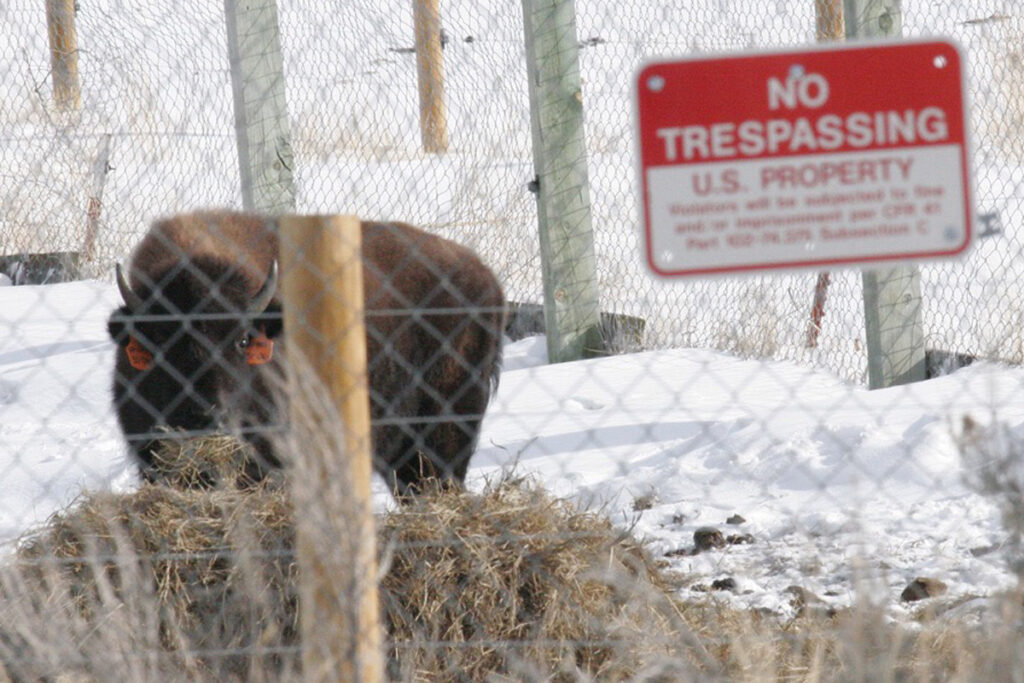 2014: A Tribal Resolution-Based Agreement with the NWF and Eastern Shoshone paved the way for a Buffalo management program in Wind River.
2014: A Tribal Resolution-Based Agreement with the NWF and Eastern Shoshone paved the way for a Buffalo management program in Wind River.
2016: On November 3, the release of 10 Buffalo marked a major milestone in restoring Buffalo to the Wind River landscape. It was the first time since the 1880s that wild Buffalo set foot on our Tribal lands.
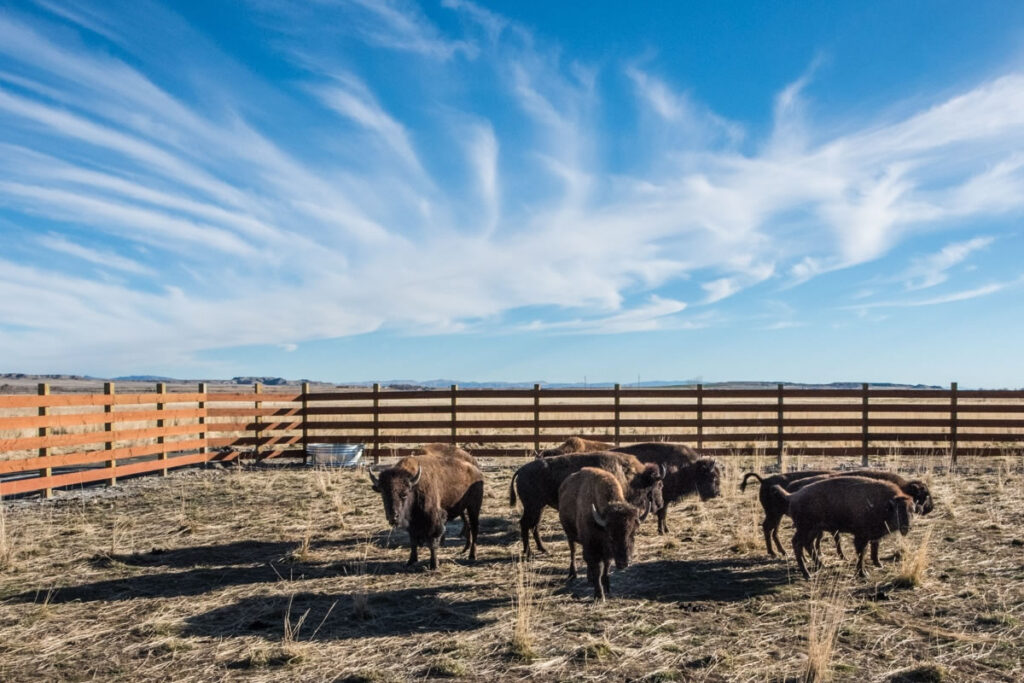
2017: On May 3, the first Buffalo calf was born on the Wind River Reservation in well over 130 years.
2019: A Tribal Resolution-Based Agreement with the NWF and Northern Arapaho leads to opportunity for more Buffalo in Wind River.
2021: Through a partnership with The Nature Conservancy and the ITBC, 26 more Buffalo were delivered to the Shoshone Tribe and 23 to the Arapaho Tribe in Wind River.

Today: The Yellowstone herd has steadily grown and includes nearly 5,500 animals today. On the Wind River Indian Reservation, the Northern Arapaho and Eastern Shoshone tribes collectively manage over 220 Buffalo.
Tribal Leadership in Buffalo Conservation
Mass extermination of Buffalo in the 19th century diminished what had once been a prime food source for many Tribes, severing connections that had sustained Indigenous communities for thousands of years.
Today, as Buffalo restoration programs expand, Indigenous communities are reclaiming the role of stewards of these animals. The return of Buffalo represents more than ecological revitalization — it’s a healing of the wounds inflicted during the period of near-extinction.
Through dedication to Buffalo conservation, Indigenous Peoples are leading the way in not only saving a species but also revitalizing the relationship that sustained Buffalo and people for millennia.
For thousands of years the Buffalo took care of us, and now — through collective conservation efforts — it’s our turn to care for them.

